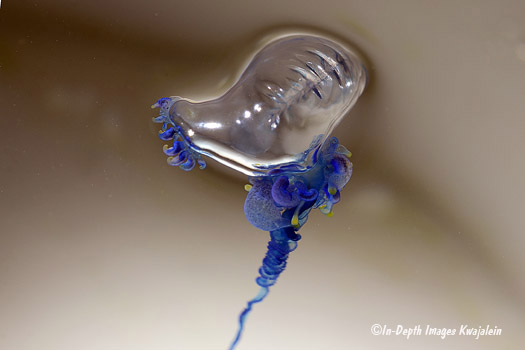
The Portuguese man-o-war is technically not a jellyfish but a floating siphonophore, a related group that also has some jelly-like species. This species is a colonial animal composed of three different kinds of polyps for defense, reproduction and feeding, and they are topped by the air bag that holds them floating on the surface. The tentacles have powerful nematocysts that can cause a painful and sometimes dangerous sting. They are usually found after floating ashore on a windward beach. They seem to travel together, so when you find them on the beaches, there are usually lots of them; other times they cannot be found at all. Occasionally snorkelers or even divers can inadvertently run into the tentacles of still floating man-o-war, which in extreme cases can be as long as 50m. Those we see in the Marshall Islands are much smaller than photographs we have seen from some other oceans. Some scientists consider the smaller one we have here to be Physalia utriculus, but others think they are all one species. These are eaten by the nudibranch Glaucus atlanticus, which has an internal air bladder and floats upside down on the surface eating floating siphonophores.

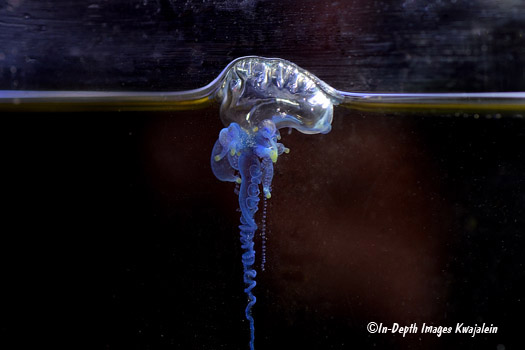
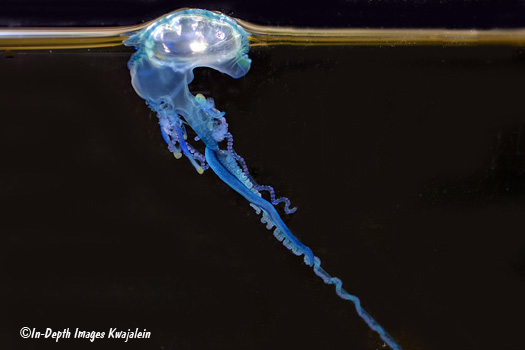
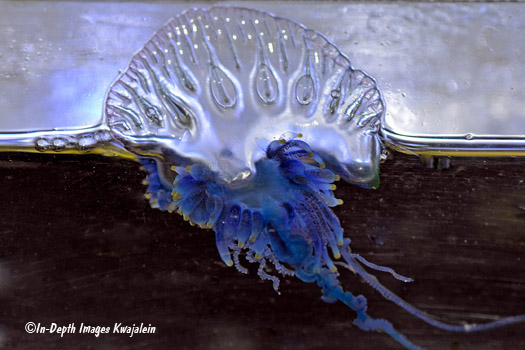
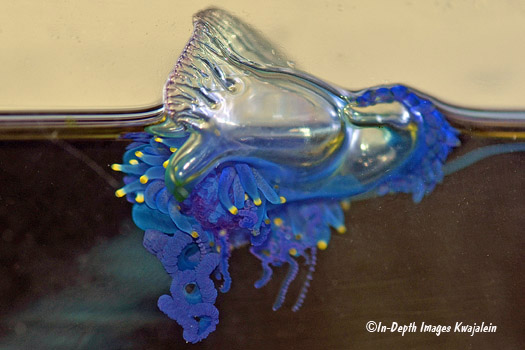
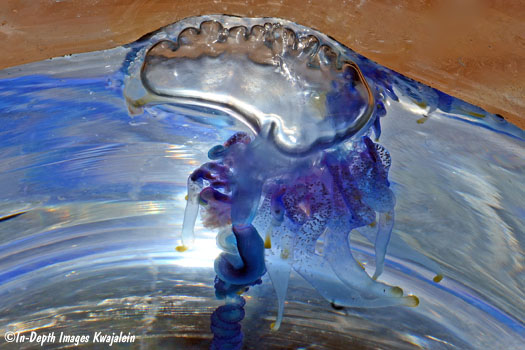
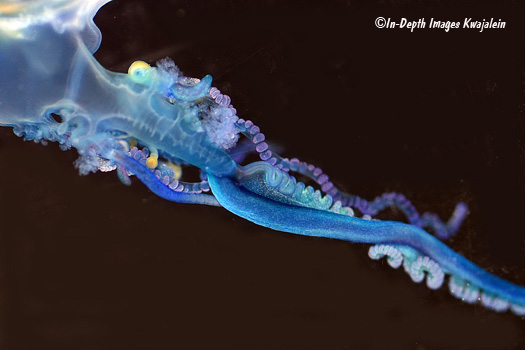
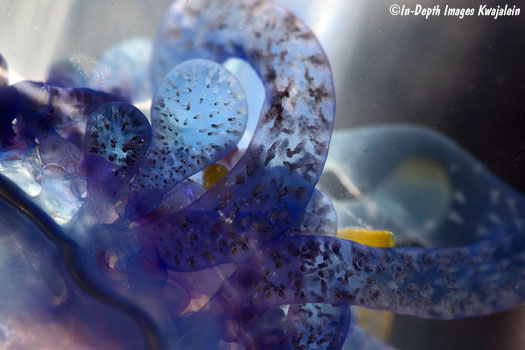
As typically seen washed ashore.
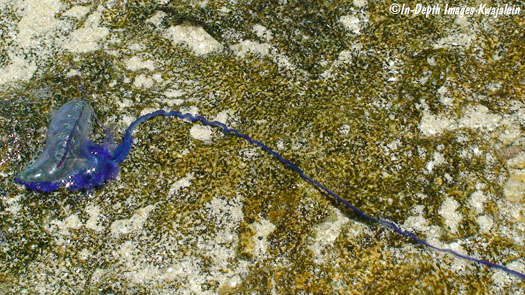
From under the water as a man-o-war drifts past.
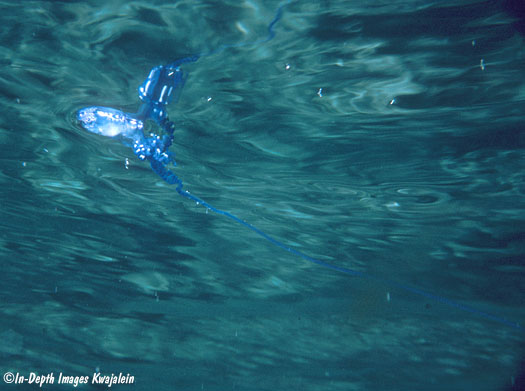
A hapless snorkeler who ran into a man-o-war while swimming without protection.
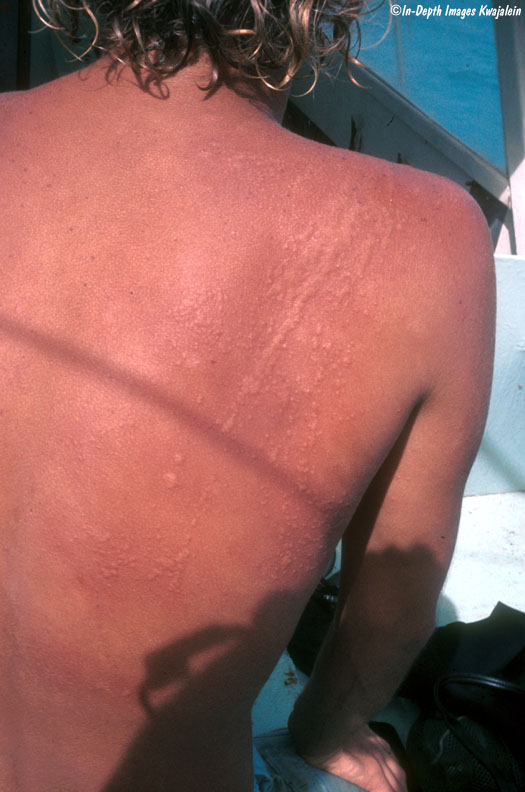
Created 20 October 2015
Updated 15 November 2020